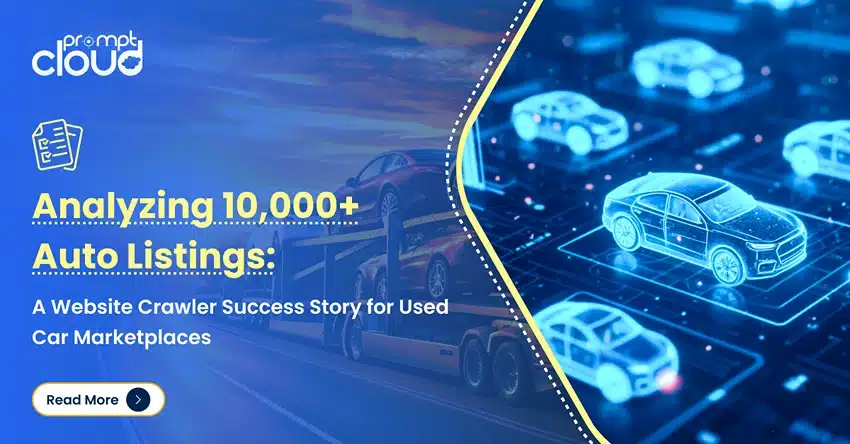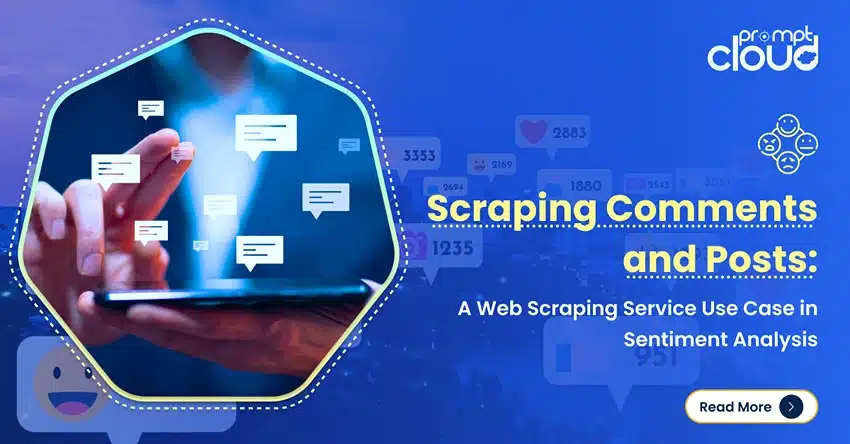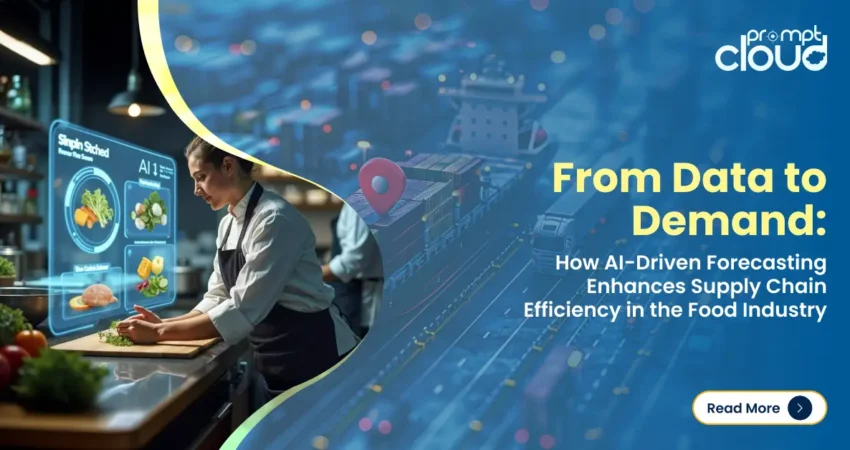
- What Is AI-Based Demand Forecasting?
- Why Demand Forecasting is Challenging for the Food Industry?
- Why AI-Driven Demand Forecasting is a Game Changer for the Food Industry?
- How Web Scraping Powers AI-Driven Forecasting?
- From Data to Demand: Real-World Use Case of AI Forecasting
- How to Select the Best AI-Based Demand Forecasting Tool?
- How AI is Revolutionizing the Future of the Food Industry?
- Conclusion
The food industry is a complex, fast-moving sector where demand can be as unpredictable as the weather. With customer expectations soaring and supply chain disruptions becoming more frequent, businesses must stay ahead by accurately forecasting demand. This is where AI based demand forecasting comes in, revolutionizing the way supply chain managers and data analysts approach planning and inventory management.
By combining advanced technologies like AI, ML-based demand forecasting tools, and web scraping, the food industry can effectively optimize operations, reduce waste, and meet consumer needs seamlessly. Let’s dive into how these technologies work together to transform supply chains and improve efficiency.
What Is AI-Based Demand Forecasting?
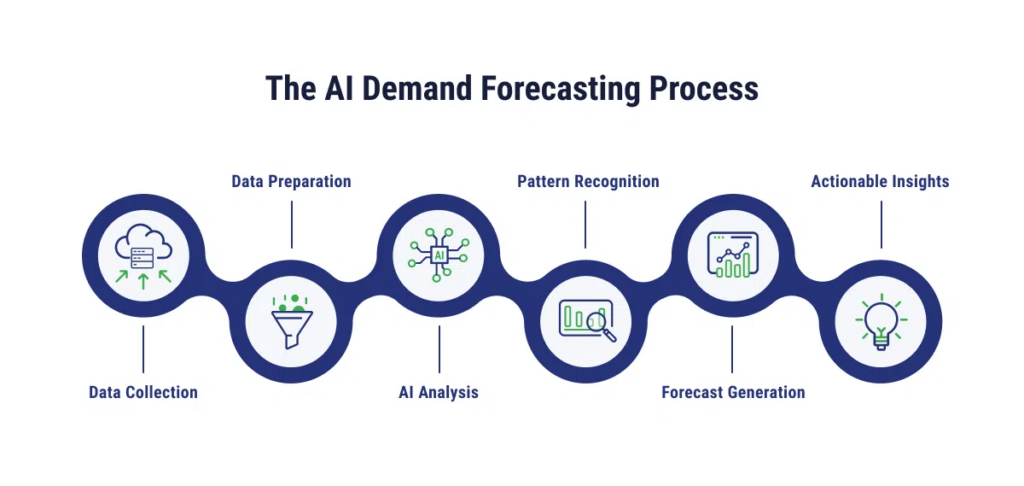
Image Source: TierPoint
AI-based demand forecasting uses machine learning algorithms to analyze historical data, market trends, and external factors to predict future demand accurately. Unlike traditional methods that rely solely on historical sales data, AI models consider a broader set of variables, including:
- Weather patterns
- Consumer sentiment (gleaned from social media and online reviews)
- Regional events or holidays
- Competitor pricing
Web scraping plays a vital role in feeding these algorithms with real-time data. By collecting information from online platforms like e-commerce sites, weather APIs, and news sources, businesses can gain a comprehensive view of the factors influencing demand.
Why Demand Forecasting is Challenging for the Food Industry?
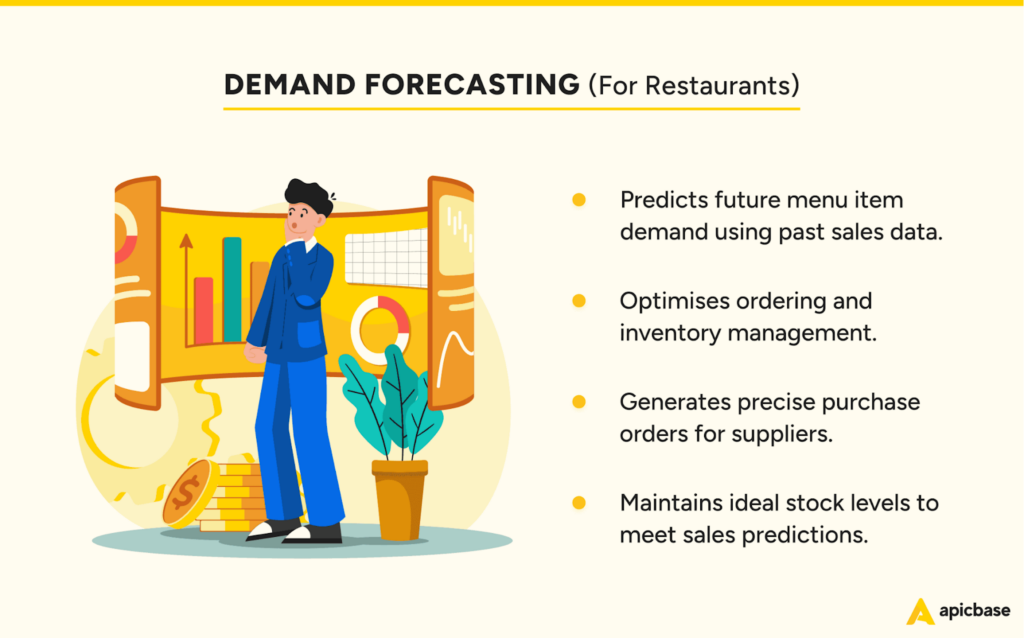
Image Source: apicbase
The food industry faces unique challenges in demand forecasting:
- Short Shelf Life: Fresh produce, dairy, and bakery items require precision in supply chain management due to their limited shelf life.
- Seasonal Demand Fluctuations: Festivals, weather conditions, and trends heavily influence demand patterns.
- Volatile Market Trends: External factors like economic shifts, consumer preferences, and global crises can disrupt traditional forecasting models.
- High Competition: Failing to predict demand accurately can lead to lost sales opportunities or overstocking, which eats into profits.
Conventional forecasting methods often fall short of addressing these issues. However, AI-based demand forecasting and inventory management tools can bridge this gap with their ability to process vast datasets and deliver actionable insights.
Why AI-Driven Demand Forecasting is a Game Changer for the Food Industry?
1. Enhanced Accuracy
AI models improve the accuracy of demand predictions by analyzing multiple data points simultaneously. This precision helps businesses avoid overstocking perishable goods or running out of high-demand items.
2. Reduced Food Waste
With an AI ML-based demand forecasting tool, food companies can minimize waste by ordering stock aligned with precise demand forecasts. This not only improves sustainability but also reduces costs associated with spoilage.
3. Improved Inventory Management
AI-based demand forecasting and inventory management tools allow supply chain managers to maintain optimal stock levels. By analyzing replenishment cycles and demand spikes, businesses can automate restocking processes and reduce carrying costs.
4. Adaptability to Market Trends
AI-driven models are dynamic. They adjust predictions in real-time when new data is introduced, such as sudden changes in consumer behavior or supply chain disruptions, making them ideal for today’s volatile market conditions.
5. Increased Customer Satisfaction
Accurate forecasts enable businesses to ensure product availability, reducing the chances of empty shelves. This leads to better customer experiences and higher brand loyalty.
How Web Scraping Powers AI-Driven Forecasting?
Web scraping is the process of extracting data from websites to gain actionable insights. In the food industry, web scraping can provide:
- Competitor Analysis: Track pricing, promotions, and product availability across competitors.
- Consumer Trends: Analyze online reviews and social media discussions to understand customer preferences.
- Market Data: Gather information on industry trends and emerging products.
By integrating web scraping with AI ML-based demand forecasting tools, businesses gain a constant stream of updated data, making their forecasting models more robust and reliable.
From Data to Demand: Real-World Use Case of AI Forecasting
Scenario: A regional grocery chain wants to optimize its inventory for fresh produce across 50 stores.
1. Data Collection:
The company uses web scraping to gather:
- Local weather forecasts
- Consumer purchasing patterns from e-commerce platforms
- Social media mentions about upcoming food trends
2. Model Training:
An AI-based demand forecasting tool analyzes this data alongside historical sales records to predict demand for each product category.
3. Actionable Insights:
- The tool identifies a spike in demand for strawberries due to an upcoming national holiday and warm weather.
- It also forecasts reduced demand for leafy greens due to a regional heatwave.
4. Implementation:
Inventory managers adjust their orders, ensuring stores stock enough strawberries while minimizing leafy greens.
5. Outcome:
- Increased sales due to better stock availability.
- Reduced waste from unsold leafy greens.
- Higher customer satisfaction and profitability.
How to Select the Best AI-Based Demand Forecasting Tool?
When selecting a forecasting tool, consider the following features:
- Scalability: Ensure the tool can handle the size of your operations and grow with your business.
- Integration Capabilities: The tool should seamlessly integrate with your existing ERP or supply chain management systems.
- Real-Time Data Processing: Choose a solution that incorporates real-time data inputs for accurate forecasts.
- Customizability: Every business is unique. Opt for a tool that allows you to customize algorithms and reporting formats.
How AI is Revolutionizing the Future of the Food Industry?
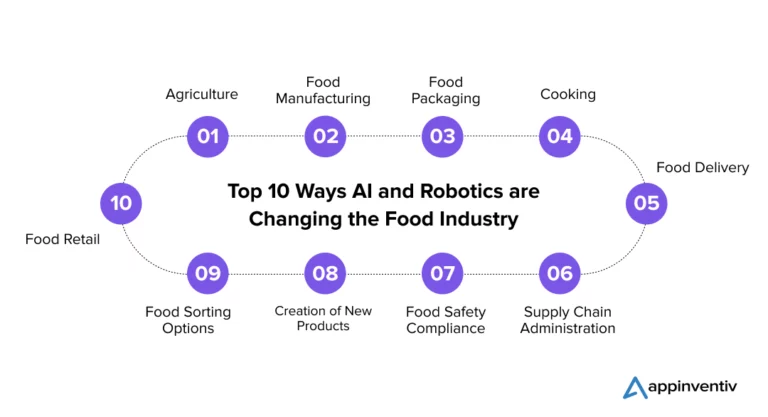
Image Source: Appinventiv
As technology advances, AI-based demand forecasting and inventory management will continue to play a critical role in reshaping supply chains. From personalized customer experiences to achieving sustainability goals, the possibilities are endless.
By leveraging the power of web scraping, AI, and ML, supply chain managers and data analysts can:
- Predict demand with unprecedented accuracy.
- Optimize inventory levels.
- Reduce operational inefficiencies.
Conclusion
AI-based demand forecasting is transforming the food industry’s supply chain landscape. By combining the power of AI ML-based demand forecasting tools with real-time data from web scraping, businesses can navigate challenges, anticipate trends, and deliver exceptional value to their customers.
For supply chain managers and data analysts, embracing this technology is the key to thriving in a competitive and unpredictable market. Whether you’re managing inventory for fresh produce or planning for seasonal surges, the future of efficient, sustainable supply chains lies in AI-driven demand forecasting. Schedule a demo with us today and see how our advanced data solutions can drive efficiency and profitability for your business.











